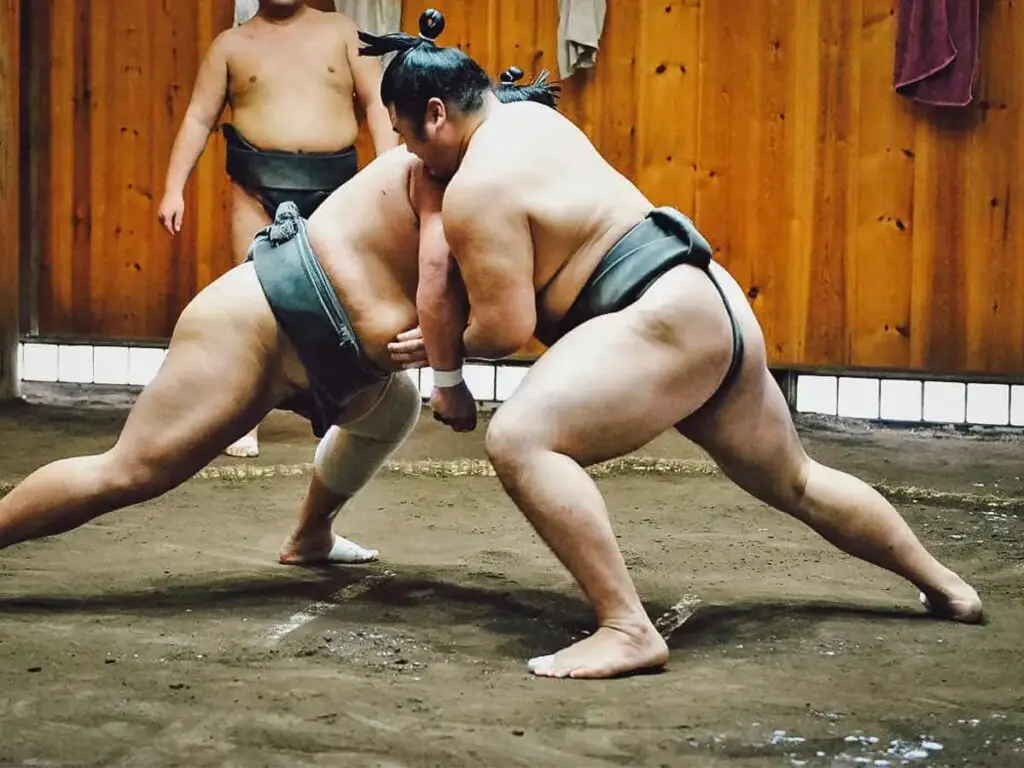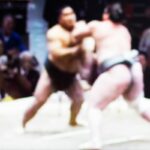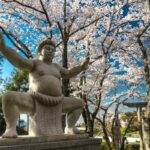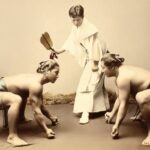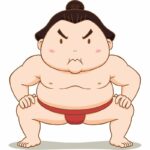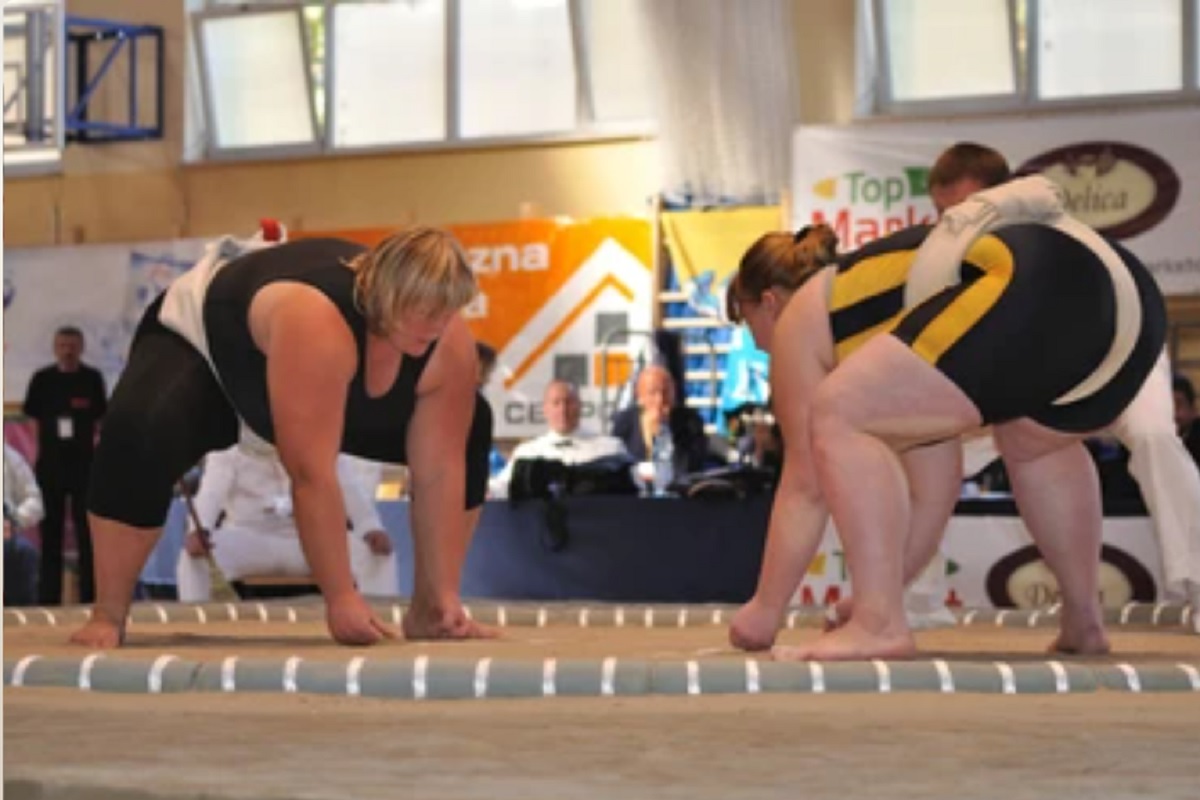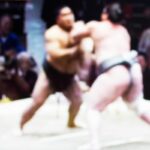Sumo wrestling is a famous Japanese form of heavyweight wrestling.
In traditional wrestling, opponents engage in bare-handed grappling in an attempt to get the other wrestler to give up or be unable to carry on.
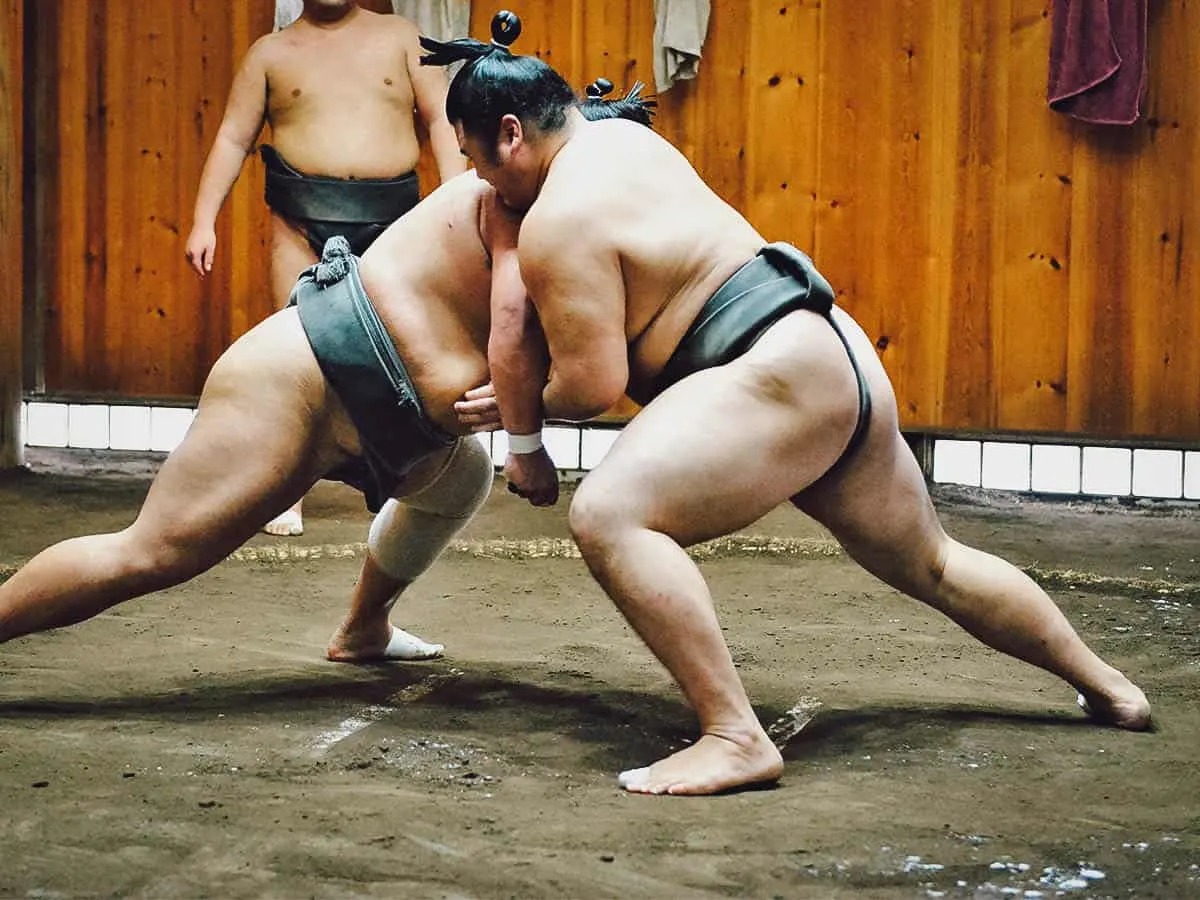
Sumo wrestling differs as the only focus is to move the opponent outside the ring or if any part of their body, other than the soles of their feet, touches the ground.
Sumo wrestling originated in ancient times as a performance sport that would entertain the Shinto deities, this influenced the religious rituals that are performed within the sport such as purifying the ring with salt and clapping to get the Gods’ attention before a bout.
Professional wrestlers in sumo wrestling are called a rikishi. Only men practice the sport professionally in Japan but it is loved by people of all genders and ages.
Six tournaments are held every year in Japan and each tournament lasts for fifteen days. Each sumo wrestler (see also, ‘Are There Female Sumo Wrestlers?‘) from the top division, Makuuchi, and the second division, Juryo, will perform in one match per day.
Matches take place on an elevated ring, which is called a dohyo. The dohyo is made of clay and the clay is covered in a light layer of sand.
Most matches last only seconds, it is very rare that they could be any longer than this but in some well-matched fights the bouts may last up to a minute.
As weight is important to have in sumo wrestling most sumo fighters are large so that they have a better advantage of overpowering their opponents and pushing them out of the ring to win.
At the very top of the sumo wrestling hierarchy are the Yokozuna, who are grand champion sumo wrestlers.
Sumo wrestling is different from other sports as the grand champions are not demoted, they are simply expected to retire when their performance begins to worsen out of respect to the title, the sport, and fans. Sumo wrestling is an incredibly respectful sport.
Are Sumo Wrestlers Healthy?
Often people will view sumo wrestlers as fat and have an expectation that they are unhealthy, however, this is not true. Sumo wrestlers are extremely muscular and this means that often their body mass has very little fat.
They can eat up to 7,000 calories per day and weigh as much as 400 pounds but due to their training and ways of gaining mass, they are in fact very healthy.
Strategic methods such as eating nutritious and healthy foods in abundance rather than fatty foods help maintain a sumo wrestler’s health and physique (see also, ‘What do Sumo Wrestlers Eat?‘).
Sumo wrestlers eat two meals per day at the sumo stables, where they live and train together. Breakfast is served around 11 am and is usually a large bowl of chanko.
Chanko is a traditional Japanese stew that is made of a broth base, lots of vegetables, meat and it is served over rice.
Dinner is eaten at 6 pm after the wrestlers have had free time and this can be anything from ramen to curry or even hamburgers. Again, meals served for dinner will also be less fatty and bursting with nutrients and proteins.
While in sumo wrestling size is very important, it means nothing if training is not being completed. Discipline and athleticism are two very important elements within sumo wrestling and they are often overlooked due to the size of the sumo wrestlers that are seen.
Sumo wrestlers need a huge amount of strength to move the opposite opponent and they need to have good aerobic health so that they do not become out of breath as well as stamina.
The intense training carried out by sumo wrestlers helps to prevent heart disease, strokes, and other illnesses that would be expected to affect a larger person.
While mass moves mass strength is a huge element within that movement and this is why sumo wrestlers are unexpectedly healthy.
What Is A Sumo Wrestlers Training Regime?
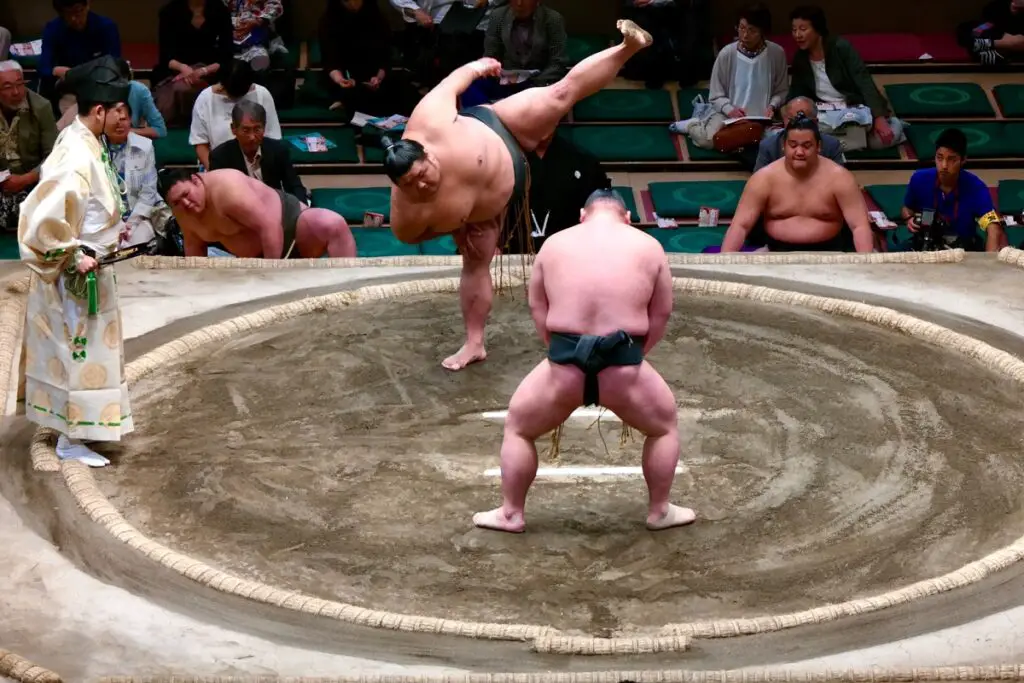
Training regimes differ depending on your ranking within the sumo hierarchy. Most top sumo wrestlers train nearly every day all year-round. All intense training is confined to the morning time.
Unranked wrestlers begin practice first, starting at 5 am as they are then expected to go and cook the chanko for all the sumo wrestlers in the stable.
Practice ends for the other higher-ranking sumo wrestlers at 10.30 am when the younger wrestlers have finished preparing the chanko.
Before eating the wrestlers take a bath with the highest-ranking wrestlers bathing first and the lowest-ranking wrestlers bathing last. They fix their hair into a topknot before going to eat their meal.
Once they have finished eating they have free time which often is spent napping to give their bodies extra recovery time after a morning of intense training.
Typically when training sumo wrestlers will perform exercises referred to as shiko, teppo, matawari, moshiai, and butsukari-geiko. These exercises are explained below.
- Shiko: This exercise improves lower body strength and is performed at the beginning of bouts also, you will recognize it as the move whereby sumo wrestlers lift alternate legs before strongly slamming their foot back down to the ground.
- Teppo: This exercise teaches the basics of moving the opponent in the ring without losing balance.
- Matawari: Flexibility is very important for sumo wrestlers and this exercise helps to develop flexibility.
- Moshiai: This is the term given to the practice matches that occur next in a training session. The winner stays on from each match.
- Butsukari-geiko: Each sumo wrestler takes turns slamming their body weight into each other to help strengthen their core stability.
Talking is not allowed during practice and training regimes become more intense as tournaments approach, especially for unranked wrestlers who are hoping to move up in the hierarchy. It is their rigorous training that keeps the sumo wrestlers healthy and strong (see also ‘How Strong Are Sumo Wrestlers?‘).
Frequently Asked Questions
Where Can You See Sumo Wrestling?
There are tournaments held at six different times a year in Japan. Competitions are held in Tokyo during January, May, and September, in Osaka during March, In Nagoya during July, and in Fukuoka during November.
Tournaments last for fifteen days giving ample opportunity for tourists and locals to go and see these events.
Tickets can be bought online through official vendors or at the stadiums but you will need to get there early to avoid disappointment.
If you are not in Japan during tournament times you can also possibly have the opportunity to see exhibition tournaments and occasional retirement exhibitions.
In Tokyo, there are over forty sumo stables that offer tours where you can go and watch sumo wrestlers train. The official Japanese Sumo website has a list of these sumo stables, as well as information regarding exhibitions and tournaments.
Are All Sumo Wrestlers Japanese?
Traditionally all sumo wrestlers were Japanese but in recent years this has changed and there are now wrestlers from Russia, Georgia, Mongolia, and China competing professionally in Japan.
Sumo wrestlers who are not from Japan are expected to wear all the traditional attire that Japanese sumo wrestlers would wear and learn Japanese to understand the terms called out during competitions.
One of the highest-ranking sumo wrestlers came from Mongolia and his name was Asashoryu, this shows that through hard work and dedication to the traditional sport anyone can succeed.
Why Do Sumo Wrestlers Wear Diapers?
Sumo wrestlers wear a mawashi when competing or training. The mawashi is a heavy silk loincloth that is tightly wrapped around the sumo wrestler and tied in a large knot at the back.
The mawashi was introduced as it prevents cheating and allows the sumo to show the Shinto gods that they are not cheating.
Many winning tactics involve getting a grip on your opponent’s mawashi to allow you to push them out of the ring or to affect their balance, causing them to fall.

